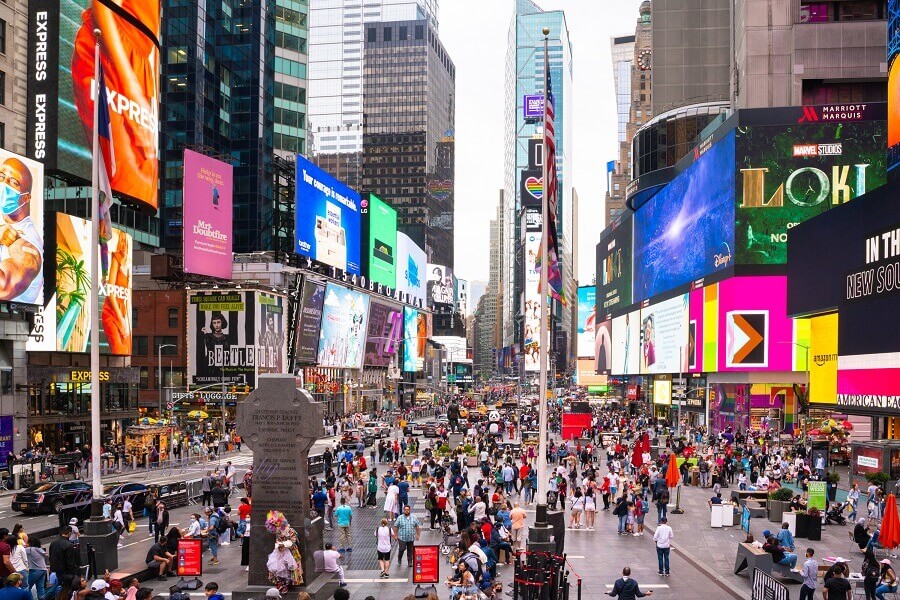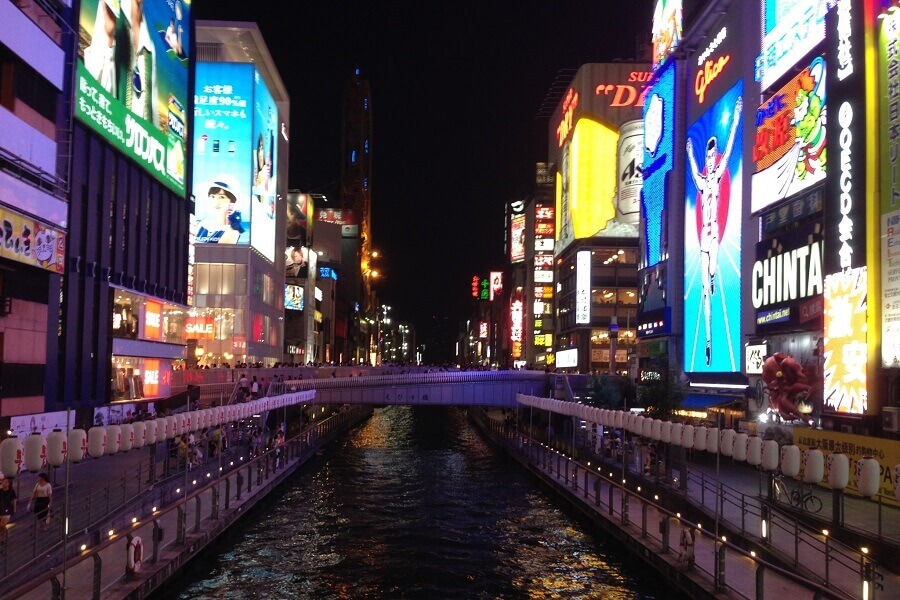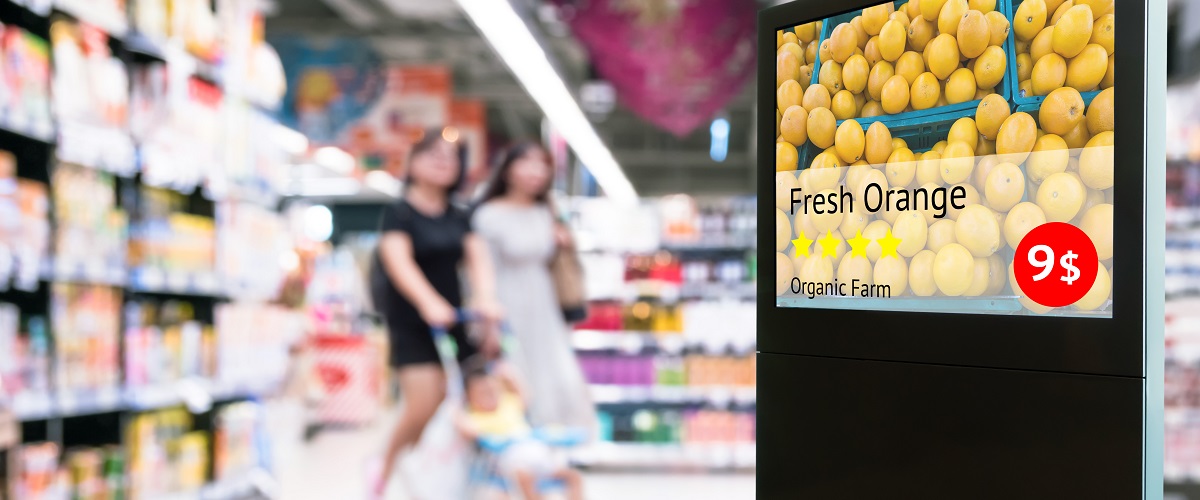| October 11, 2021
Dynamic digital OOH: Powering compelling advertising experiences through context, not cookies
Digital out-of-home is one of the fastest growing spaces in advertising, and that will only intensify in the coming months and years. Key to this growth will be the rise of dynamic ads, which are more vibrant, engaging, and responsive than traditional OOH or even most DOOH ads that are out there.
With third-party cookies set to crumble, advertisers are seeking new ways to find the right person with the right message at the right time—and many see dynamic DOOH as the future-friendly (and privacy-friendly) solution. DOOH can be combined with first-party data to create and target audiences in the real world, opening up exciting new possibilities for engaging storytelling with dynamic and contextual advertising. Learn why dynamic DOOH appeals to today’s ad buyers and what capabilities and features they look for when choosing DOOH networks to partner with.
What is dynamic digital out-of-home (DOOH) advertising?
Out-of-home advertising has come a long way since the first roadside billboards came into use. Today, it’s possible to have digital out-of-home (DOOH) displays automatically change content in response to all manner of data triggers, enabling engaging real-time interactions with the people standing in front of them. This type of advertising is called dynamic DOOH, and it’s been gaining traction with advertisers in the past few years due to advances in technology, increased availability with DOOH media owners, and the need for new customer (re)engagement tactics.

Dynamic content is content that uses data to create a more impactful and relevant experience for audiences. As a general category, this can include motion or video content, though these are basic examples. More impressive dynamic content will offer static, moving, or video imagery that changes in response to a preset trigger or condition. For example, if it’s a cold rainy day and someone walks by a DOOH billboard, they might see an ad for a Starbucks hot chocolate. But as soon as the rain clears up and the sun comes out, a passerby would be served an ad for Starbucks iced coffee instead.
The potential triggers for a dynamic DOOH campaign are essentially limitless. Everything from weather data to financial marketing data, to sports results, to on-location visual sensors can be used to trigger changes to on-screen content; whatever the data source, the goal is always to draw on that data to provide a more appealing, more relevant content experience. If a creative team can imagine a dynamic DOOH campaign that they want to run, there’s probably a way to make it happen – provided media owners have the right tech powering their networks.
Why dynamic DOOH appeals to ad buyers today
Over the last two decades, companies have proven that personalization and one-to-one marketing tactics work; according to Epsilon, 80% of consumers say they’re more likely to make a purchase when brands offer personalized experiences. But while consumers today have developed high expectations during the cookie-dominated years, they’re also clamoring for better protection of their personal data. With new restrictions set to phase out third-party cookies by 2023, brands must find an alternative to meet these expectations—and many advertisers will be looking to use context, not 1:1 targeting, to create compelling advertising experiences moving forward.
This is going to be a big adjustment in the online space, which has already seen a decrease in the effectiveness of display ads due to “banner blindness” and digital device burnout. Out-of-home advertising, on the other hand, is actually becoming more effective as consumers increase their time commuting, use more contactless technologies, and seek outdoor dining and activities. In a world already oversaturated with advertisements, the ability to meaningfully connect with consumers and leave a lasting impression is at an all-time premium—and dynamic DOOH ads in particular promise to deliver high-quality results.
Research from Virtuo City out of Leeds University revealed that using contextually relevant (i.e., dynamic) DOOH campaigns increases advertising awareness by 18%. Dynamic ads stand out because they feel personalized and relevant; they’re more engaging for customers because they feel like a back-and-forth conversation instead of a sales pitch. Dynamic DOOH enables brands to capitalize on the power of personalization while reaching a more engaged audience through contextual conversations with technology.
Given all of these advantages, it’s no wonder the number of brands demanding dynamic ad capabilities is growing. Figures included in IAB’s latest report suggest the number of media buyers at least trying dynamic DOOH in their campaigns will double in 2022. Network owners looking to capitalize on the huge growth of dynamic DOOH should invest in meeting this demand.

Making dynamic DOOH more accessible to advertisers
With consumers researching, browsing, and purchasing on multiple channels and devices, marketers are adopting an omnichannel approach to advertising. Their goal is to create an experience that delivers relevant messaging at every stage of the buyer’s journey – whether someone is using their computer or mobile device, or walking around outside their home. That’s why today’s savvy network owners aren’t just investing in dynamic DOOH capabilities; they’re also making it easier for their customers to buy dynamic DOOH campaigns that can integrate seamlessly into a multichannel or omnichannel ad campaign.
Because dynamic content is essentially any content that makes use of data to increase contextual relevance, there are several different approaches to content that buyers might want to employ.
Some common examples:
- A buyer books a dynamic campaign with a media owner (i.e., DOOH/digital signage network). The campaign has set creative, and will only run when specific conditions are met.
- A buyer books a campaign with a media owner (again, paid for in advance) and delivers ads that change copy or creative in response to data signals (weather, financial information, sports scores, etc.)
- A buyer makes a deal for a programmatic campaign through a DSP. Every time specific conditions are met, a transaction is completed and the buyer’s ad appears on the media owner’s screen. The ad creative may or may not change depending on the data.
Watch: How Intersection bettered the lives of New Yorkers using dynamic DOOH
Because there are different ways buyers might want to launch dynamic content, it’s important for media owners to set themselves up to accommodate as many of these options as possible. Adopting a content management system that allows for easy integration of external data feeds for creating and scheduling dynamic content is essential. Support for programmatic transactions, too, will enable additional opportunities for buyers to launch dynamic campaigns. It will also open up the media owner’s network to a global community of buyers looking to reach audiences across premium DOOH inventory all around the world.
We’ll note that programmatic selling isn’t a prerequisite for making dynamic DOOH ad capabilities available to buyers. But improved access to dynamic campaigns is one of the many factors driving consideration of programmatic DOOH usage. Others include more flexible buying options, increased operational efficiency, enhanced reach, and increased data and targeting capabilities. As adoption rates of programmatic DOOH continue to rise, forward-thinking media owners are preparing their networks for PDOOH trading to meet the growing demand.
Moving forward, media networks that offer advertisers the ability to easily incorporate dynamic DOOH as part of an omnichannel marketing strategy will have an edge on the competition.
Common dynamic content triggers
The data streams that can be used to trigger dynamic content delivery are effectively limitless. If there’s a data source, a digital out-of-home network can probably integrate it to drive dynamic content. Here are a few examples of common data sources that can be harnessed for dynamic DOOH:
- Anonymous audience video analytics: This software uses camera sensors and video analysis algorithms to identify the age, gender, and other distinguishing characteristics of individuals passing by DOOH displays, then changes content based on the user. An interactive campaign by GMC used facial recognition to deliver different messages to different demographics passing by the screen. It’s important to note that this type of trigger can only be used to trigger content on a demographic level. Visual information is semi-anonymized in the DOOH space, meaning there is no 1:1 targeting of individuals done with this technology.
- Mobile location data: Many DOOH networks look at mobile location data from ad exchanges and data brokers to get a sense of audience demographics and dwell time around their displays. But for an added layer of context, some networks use WiFi-detection and camera sensors within the display itself to offer a real-time look into who is currently in the area. With programmatic DOOH, the data can then be used to trigger a campaign when the corresponding conditions are met.
- Environmental data: Real-time environmental data from displays with temperature gauges, accelerometers, and air quality sensors can be used to trigger contextual ads that capture a consumer’s attention. The weather-reactive McDonalds McCafé campaign from 2019 used real-time weather data to advertise seasonal drinks.
- Integrated third-party data streams: DOOH software platforms that integrate with other data streams – such as point-of-sale and inventory systems, social media feeds, and sports scores – allow advertisers to display dynamic, real-time content that’s pertinent to their target audience. As part of its Beauty Mark social media campaign in 2020, CVS partnered with beauty brands and influencers to bring unedited selfies bearing the hashtag #BeautyUnaltered to DOOH signage in Times Square.
Watch: See GMC’s dynamic campaign powered by facial recognition
Capabilities networks need to enable dynamic DOOH
It takes more than will and a good idea to bring a dynamic DOOH campaign to life. Selecting the right digital signage software and providing access to key technological capabilities will allow network owners to do a better job of appealing to buyers.
Support for diverse content formats
For content to be dynamic, it needs an element of dynamism. Network owners should therefore ensure their digital signage or DOOH software supports the delivery of formats like the following:
- Video content: A study from Ocean Outdoor and Neuro-Insight showed that full-motion DOOH campaigns have an impact 2.5 times greater than content on static displays, delivering a powerful emotional experience comparable to tv advertising at a fraction of the cost.
- HTML5 media: With HTML5 content, audience data can be used to change campaign text, images, or animation in real-time based on contextual triggers. A piece of DOOH content created in HTML5 is essentially a mini-webpage; it offers interaction potential that wouldn’t be possible with predefined content.
- Live feeds: Ever heard of “show don’t tell”? In 2020, British supermarket chain Waitrose launched a dynamic DOOH campaign that featured live-stream footage from their farms. Instead of telling audiences about the quality of their food and the treatment of their farm animals, people could see for themselves.
- Multi-screen and synchronization capabilities: One screen is great, but using multiple digital displays to present your content can make for a better, or even more memorable experience. The Times Square takeover for Harry Potter and the Cursed Child required coordination of a single ad across many different displays.
By supporting these kinds of content, networks open the door for all kinds of eye-catching, truly dynamic campaigns.
Real-time data integration
Dynamic DOOH campaigns often rely on external data feeds either to trigger changes in onscreen content or to trigger campaign delivery outright. By including support for a variety of data feeds, you can ensure your signage has the necessary flexibility to accommodate all sorts of creative campaigns.
Some of the common data integrations today’s advertisers will ask for include:
- Time of day
- Weather
- Audience measurement
Note that just because there is advertiser demand for these types of data feed, it does not mean that you should maintain an ongoing connection with that data at all times. Rather, it means that it is important for your business to have the internal skills and knowledge required to find quality data feeds and integrate them into campaigns as needed. Some DOOH businesses, like QMS Media, have even collaborated with external parties to create new data feeds when a required source did not already exist. Being able to go the extra mile in this way can also do wonders for attracting repeat business from advertisers.
Watch: See how foodora used live weather data to power a dynamic campaign that increased food pick-up orders
Conditional and triggered playback
Being able to adapt to changing circumstances is what dynamic DOOH content is all about. For that reason, it’s important that networks make it possible for screen content to change in response to ambient conditions or triggers.
Some common conditions and triggers include:
- The presence or predominance of a particular audience demographic
- Local, national, or international special events
- A particular piece of content last played on the screen
APIs for Third-party software integrations
Incorporating third-party software can be a good way to deliver familiar, personal, and powerful features or services to a DOOH network’s audience. Enabling at least some of the more common types of third-party software integrations can be a good way to attract big campaigns to a network.
Some common integrations include:
- Social media feeds (often using hashtags)
- Mobile (remote control, QR codes)
- Audience measurement software
Watch: This creative execution relied on integrating some unusual data for a dynamic and interactive DOOH campaign
Interactivity
Some of the most fun dynamic campaigns invite audience members to interact with a display to manipulate or trigger content on the screen. Particularly in smaller settings where an individual may turn to a digital screen for extra information or entertainment, interactivity is great to have.
Some common interactive features include:
- Touchscreen control of on-screen elements
- Gesture control to manipulate screen images
- Wayfinding or information services for a business, building, or area
- Geo-targeting to market to nearby mobile devices
Dynamic content is one of the key differentiators that makes digital out-of-home media such an exciting alternative to third-party cookies for advertisers. By taking steps to add the most common and popular dynamic features to your network, you’ll instantly make your network more appealing to big buyers with big ideas they’re looking to implement.
Want to make your DOOH network more dynamic?
Contact our team to get started!
